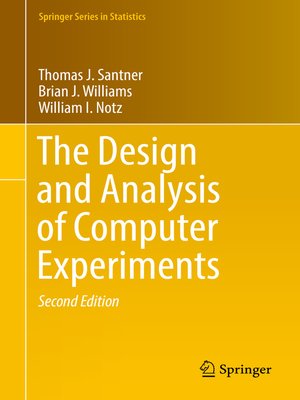The Design and Analysis of Computer Experiments
ebook ∣ Springer Series in Statistics
By Thomas J. Santner

Sign up to save your library
With an OverDrive account, you can save your favorite libraries for at-a-glance information about availability. Find out more about OverDrive accounts.
Find this title in Libby, the library reading app by OverDrive.



Search for a digital library with this title
Title found at these libraries:
| Library Name | Distance |
|---|---|
| Loading... |
This book describes methods for designing and analyzing experiments that are conducted using a computer code, a computer experiment, and, when possible, a physical experiment. Computer experiments continue to increase in popularity as surrogates for and adjuncts to physical experiments. Since the publication of the first edition, there have been many methodological advances and software developments to implement these new methodologies. The computer experiments literature has emphasized the construction of algorithms for various data analysis tasks (design construction, prediction, sensitivity analysis, calibration among others), and the development of web-based repositories of designs for immediate application. While it is written at a level that is accessible to readers with Masters-level training in Statistics, the book is written in sufficient detail to be useful for practitioners and researchers.
New to this revised and expanded edition:







